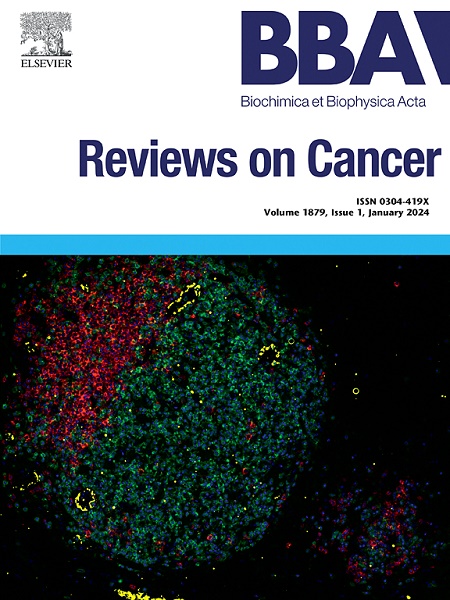Biomarkers in cystic lesions of the pancreas: Controversies and advances
IF 9.7
1区 医学
Q1 BIOCHEMISTRY & MOLECULAR BIOLOGY
Biochimica et biophysica acta. Reviews on cancer
Pub Date : 2025-07-17
DOI:10.1016/j.bbcan.2025.189392
引用次数: 0
Abstract
Pancreatic cystic lesions (PCLs) represent a highly heterogeneous category of pancreatic abnormalities with an increasing prevalence due to advances in imaging modalities and an aging population. While the majority of PCLs are benign, a subset harbors a variable risk of malignant transformation. Current guidelines rely primarily on imaging features for risk stratification, but limitations in diagnostic accuracy have led to many unnecessary surgical procedures and conversely, missed opportunities for timely resection in cases that progress to malignancy.Recent advances in biomarker discovery hold great promise for improving the management of PCL. In this review, we focus on comparing the diagnostic efficacy of classical tumor markers, highlighting the controversies and challenges associated with each. In addition, we explore the heterogeneous expression of mucins in different subtypes of intraductal papillary mucinous neoplasms (IPMNs) and review the role of common genetic mutations and next-generation sequencing (NGS) in the genomic assessment of PCLs. Importantly, we summarize the results of several novel gene panels and evaluate their diagnostic performance and clinical potential. Although accurate diagnosis and risk stratification of PCLs remain challenging, advances in biomarkers and molecular techniques continue to reveal their potential in precision medicine, with promising implications for clinical translation.
胰腺囊性病变的生物标志物:争议与进展。
胰腺囊性病变(PCLs)是一种高度异质性的胰腺异常类型,由于成像方式的进步和人口老龄化,其患病率不断上升。虽然大多数pcl是良性的,但一个子集具有恶性转化的可变风险。目前的指南主要依靠影像特征进行风险分层,但诊断准确性的限制导致了许多不必要的外科手术,相反,在进展为恶性肿瘤的病例中,错过了及时切除的机会。生物标志物发现的最新进展为改善PCL的管理带来了巨大的希望。在这篇综述中,我们将重点比较经典肿瘤标志物的诊断效果,并强调与之相关的争议和挑战。此外,我们探讨了粘蛋白在不同亚型导管内乳头状粘液瘤(IPMNs)中的异质表达,并回顾了常见基因突变和下一代测序(NGS)在pcl基因组评估中的作用。重要的是,我们总结了几个新的基因面板的结果,并评估其诊断性能和临床潜力。尽管pcl的准确诊断和风险分层仍然具有挑战性,但生物标志物和分子技术的进步继续显示出它们在精准医学中的潜力,对临床转化有很大的影响。
本文章由计算机程序翻译,如有差异,请以英文原文为准。
求助全文
约1分钟内获得全文
求助全文
来源期刊

Biochimica et biophysica acta. Reviews on cancer
医学-生化与分子生物学
CiteScore
17.20
自引率
0.00%
发文量
138
审稿时长
33 days
期刊介绍:
Biochimica et Biophysica Acta (BBA) - Reviews on Cancer encompasses the entirety of cancer biology and biochemistry, emphasizing oncogenes and tumor suppressor genes, growth-related cell cycle control signaling, carcinogenesis mechanisms, cell transformation, immunologic control mechanisms, genetics of human (mammalian) cancer, control of cell proliferation, genetic and molecular control of organismic development, rational anti-tumor drug design. It publishes mini-reviews and full reviews.
 求助内容:
求助内容: 应助结果提醒方式:
应助结果提醒方式:


